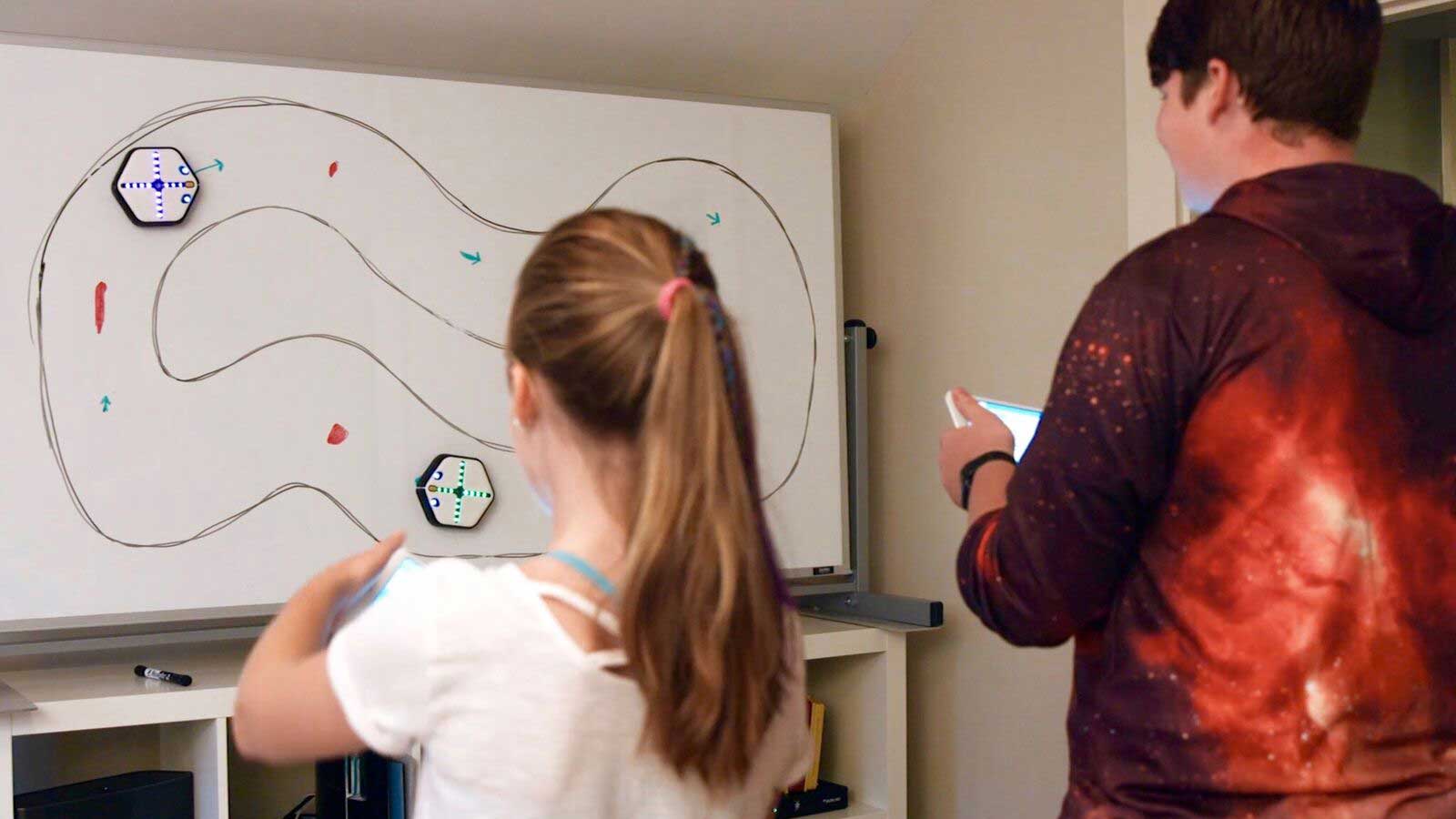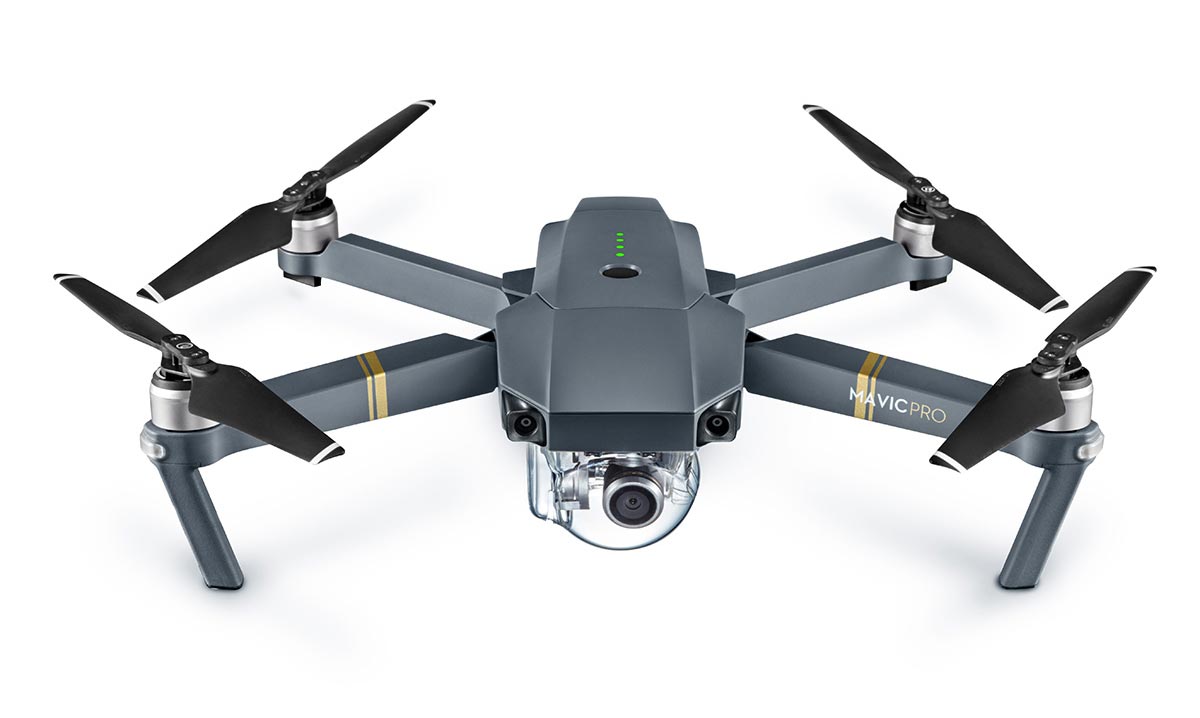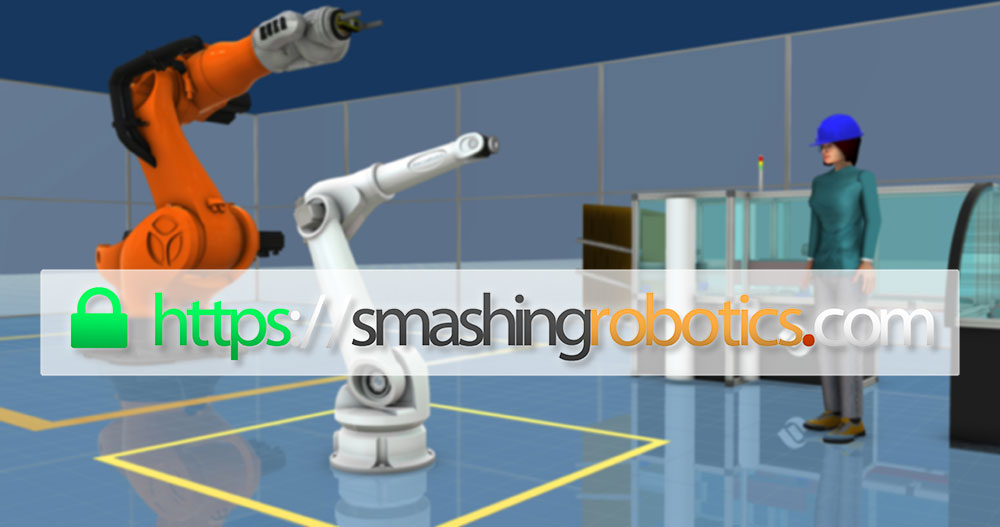Not long ago, when referring to a telepresence system the meaning of such phrase would have been in most cases equivalent to some form of teleconferencing, employing various technologies like VOIP, P2PTV and various codecs to create audio, video and data communication channels between people in different locations, either over the Internet, local or wide area networks. Augmented Reality (AR) conferencing also made its way as technological breakthroughs emerged into the market, further increasing the interactivity, however this has not become widespread. Nonetheless, conventional telepresence systems assume that a person or a group of people to gather around terminals or in certain locations where they could communicate with people in remote locations, with highly limited interactivity.
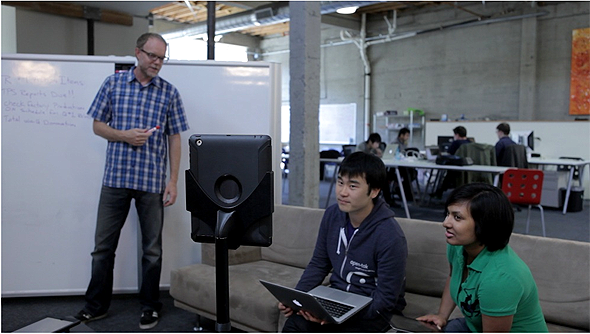
Nowadays robots have found their way into this market, creating a much more immersive and more personal experience for people employing such systems, greatly broadening the number of applications at which telepresence systems can be employed. Thanks to telepresence systems employing robots it is no longer required for people to be bound to their desks around terminals when sharing information, in this way a true “on-location” experience is possible, enabling remote users to spot various issues exactly where they take place in the field, as opposed to taking information from reports presented in a conference room, or doctors to perform surgeries at remote location or teaching medicine students various procedures and so much more. In this two part article we aim at rounding up telepresence robots and kits readily available on the market or that will be released in the near future.
Jazz Connect
The Jazz Connect range from european manufacturer Gostai is dedicated to teleconferencing but can serve other purposes as well. First introduced in 2006 the Jazz platform has been under continuous development since then. The remote user can interact with the robot through a web interface offering real-time camera rendering and GOSTAi 3D pointer technology that provides complete control and feedback of the robot. The robot is equipped with a camera – optional wide angle or normal FOV with HD resolution, microphones, loudspeakers and a rolling base for the user to see, hear, talk and move around the remote location. The robot can even move its head for a more natural interaction with humans. It can also be used for healthcare or entertainment purposes, for instance visiting a museum or another interesting location and can be programmed to perform autonomous patrol tasks. It can be equipped with an optional 5 inch LCD display for better interaction.

The robot runs Ubuntu Linux with GOSTAi Urbi open-source middleware that is compatible with ROS and is backed by a large community. There is also a special development and research version called Open Jazz.
Processing is ensured by an Intel Atom CPU and communication is accomplished via WiFi. It has a maximum speed of 4 km/h and a maximum rotating speed of 405 degrees per second and can operate continuously for 5 hours on a single charge, a docking station is also provided for the automatic recharge feature, a full charge taking place in about 1 and a half hours. The robot employs 4 IR receivers for accurate guidance to the docking station, 8 ultrasonic sensors for obstacle avoidance and, depending on the version, it can be equipped with a Hokuyo laser sensor for autonomous navigation. Depending on version, i.e. Jazz Security, it can feature video motion detection and alert via various means. The robot has a height of 1 meter and a weight of 8 kilograms.
Double Telepresence Robot
The Double platform from Double Robotics is basically “wheels for your iPad” as the manufacturers describe it and was released commercially in December, 2012. Right now it can be bought at a price of US $2,499 and several optional extras such as charging dock, audio kit and travel case are also available.
A single app will be required for both the client and the robot iPad terminals, and the remote user will be able to see and be seen, hear and be heard and completely control the robot from the interface provided by the app.
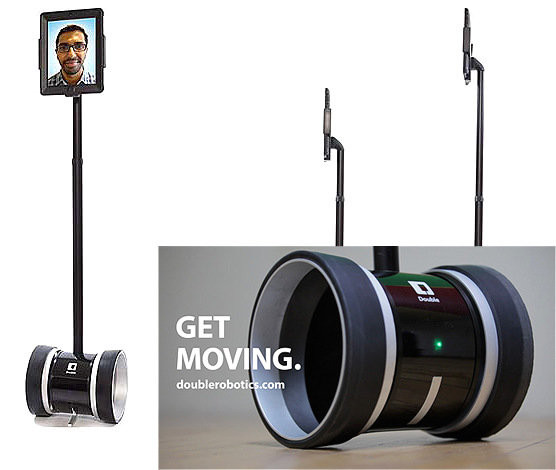
The Double rolling base has two wheels and features intelligent balancing algorithms to keep it upright, and has a motorized telescopic pole on top of which the dock holding the iPad is placed which can be adjusted to heights between 1 and 1.5 meters for the purpose of holding the iPad as close to eye level as possible of people standing or sitting. The rolling base also features kickstands that hold the robot upright if no movement is required for prolonged periods of time, effectively saving battery power. The robot will be able to operate for 8 hours on a single charge.
Xaxxon Oculus 2WD Mobile Platform Kit
The Oculus 2WD mobile platform is basically an adjustable rolling frame that can hold a variety of small 10-11 inch laptops. The platform also has a servo controlled tilting periscope for viewing the environment, suited for laptops with cameras located on top of the screen and centered, and the resulting telepresence robot can be controlled through a web interface from any PC, iOS or Android device. Two-way audio and video communication is accomplished via USB and both, the platform and the laptop can be charged through the platform from the docking station.
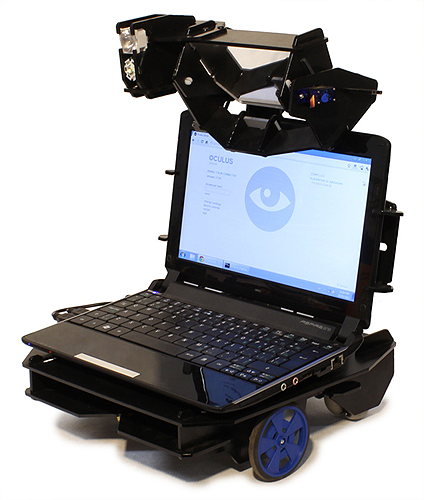
The platform has two motorized wheels and two omnidirectional wheels for support. It is based on the ArduinOculus microcontroller board which is itself based on the Arduino ATmega328 module and can be expanded with sensors or actuators. The server software installed on the laptop runs on any Windows OS as well as Linux and the software as well as hardware are open source. This kit can be bought at a price of 290 US Dollars, optional extras being the OcuLED headlight at 59 US Dollars and a mounting bracket for the ASUS Xtion Pro and Pro Live 3D sensors.
MantaroBot TeleMe
The MantaroBot TeleMe platform can be controlled using any iOS or Android mobile device running the MantaroBot control software, dedicated docks being provided for iPad, iPhone and Samsung Galaxy Tab devices. Communication takes place via Skype and the remote user can move the robot, at a maximum speed of over 2 km/h, and tilt or optionally pan the dock to view different areas of the environment through the mobile device’s integrated camera. It can also be equipped with an optional laser pointer for presentations or other purposes.

The robot can have a fixed height mast of either 0,6 or 1,2 meters, depending on option. It employs two IR sensors for obstacle detection purposes, a 3-axis accelerometer to detect and prevent tipping over, and can operate for 4 hours on a single charge with the 12 V 7 Ah standard Pb-acid battery and up to 4 times more with the optional 10 Ah extended LiFePO4 battery. An optional charging station is also available. Expansion features are available by means of the programmable I/O and ADC ports. It can be bought at a price of around 1500 US Dollars.
RoboticApp Software Suite
The tool has not been updated since 2013, so naturally server software packages are no longer available, however RoboControl apps for the Roomba and Mindstorms NXT can still be bought from several retailers.
The RoboticApp software comes in various bundles depending on the packages you need. The software suite allowed building your very own presence solution, with the aid of an iPod Touch 4th generation or other Apple mobile devices. The software package alone can be bought at around 25 US dollars and a complete robotic telepresence system can be set up for around 800 US Dollars, depending on the iDevice to be used. For instance, a RoboPresence bundle is available at RobotShop for around 500 US Dollars, including the Roomba 570 vacuum robot and a RooTooth Bluetooth interface for the robot.
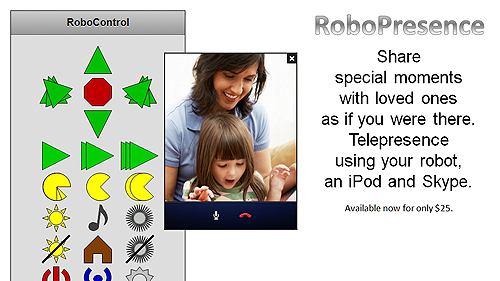
Communication takes place over Skype and the graphical interface of the RoboPresence software enables you to control the robot from any client PC or Mac with internet connectivity, running any browser and Skype application.
To set up the complete system requirements are:
- A Windows XP, Vista or 7 computer running any HTTP server, Apache recommended, and having Bluetooth connectivity;
- iRobot Roomba or Create robot with a RooTooth Bluetooth interface;
- Apple iPod, iPad or iPhone with Skype app installed and a dedicated mount;
- USB cable and optional chargers and fixtures for the iDevice.
Botiful Telepresence Robot
Unfortunately the Botiful telepresence robot project did not make it past the project phase. It was due to release in 2012 and aimed at being an extremely reasonably priced telepresence robot.
It is based on the Android OS and any Android-based device that can fit into the dock can be used to control the robot, connectivity taking place via Bluetooth or USB interfaces, although Android device must have USB slave capability. The robot will be fully customizable in terms of features as it is based on the IOIO board for Android presenting 10 general purpose I/O ports for digital, analog, PWM, I2C or serial communication for sensors and other peripherals and a SDK is also made available at a cost. By default remote communication takes place via Skype and various apps that can expand the robot’s functionality will be available for download.

For a minimum of 199 US Dollars you can buy a robot from the first batch to be released and for 245 US Dollars you also receive SDK access. For 399 US Dollars you can also have a remote Botiful dinner with founder Claire Delaunay herself however this option is already sold out. For 99 US Dollar you can buy the core of the Botiful robot, the IOIO board with motor drivers and a battery charging circuit.
For further reading about telepresence robots, please continue to part 2 or part 3 of this article.



